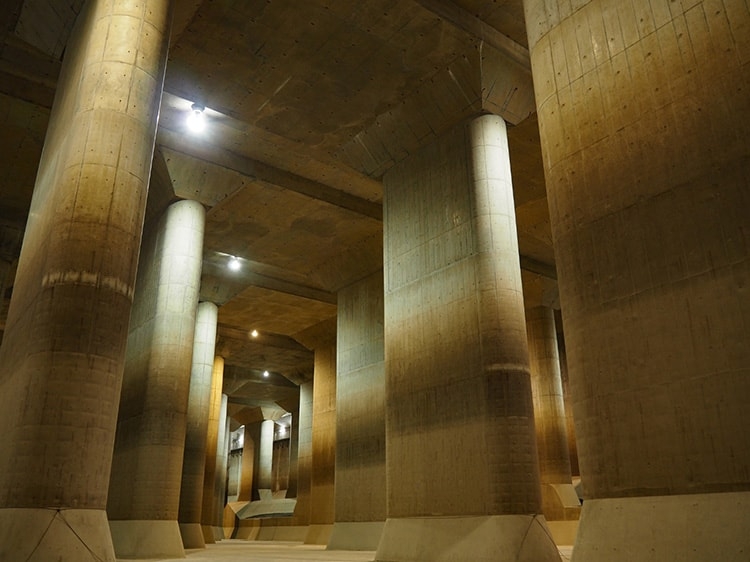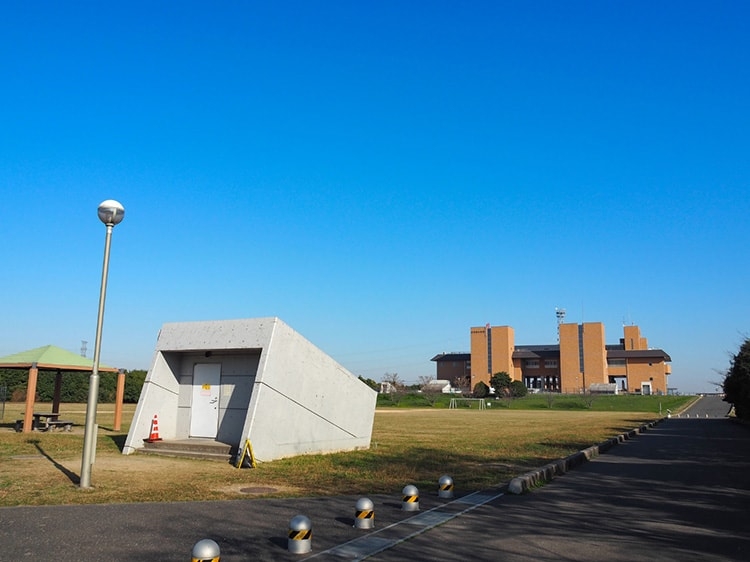The Japanese are no strangers to the perils of natural disasters like flooding. As one of the most seismically active countries in the world, Japan has been investing in building defenses and resilience against natural disasters for several decades. Many of these risk-hedging measures are invisible to residents but serve a critical role in protecting their daily lives. A lot of residential land in Japan is either reclaimed land or inland areas lower than the river levels. Although high embankments are built alongside the rivers, these could cause enormous damage if they break down.
One of Japan’s most impressive defenses against flooding is hidden 50m below ground on the outskirts of Tokyo. The Metropolitan Area Outer Underground Discharge Channel, also known as the G-Cans Project, is the world’s largest underground flood water diversion management facility. The underground structure is located between Showa in Tokyo and Kasukabe in neighboring Saitama prefecture. The densely urbanized area is low-lying and has several rivers running through it which are prone to flooding, notably the Edo River which traverses some of Tokyo’s most impressive historic sites.
The G-Cans project is made up of a labyrinth of tunnels that stretch on for over six kilometers in total, connecting 5 huge 65-meter silos to a tank that is almost 67,000 cubic meters in volume. This entire system can clear up to 200 cubic meters of water every second, the equivalent of draining an Olympic swimming pool in 12 seconds. In the event of a flood, four 14,000 horsepower turbines push the water out through the Edo River and into Tokyo Bay.
The sheer size of the structure and the height of its chambers inspire a spiritual feeling, this was not lost on the designers who chose to nickname the project “Underground Temple’.
Officials claim the facility is capable of withstanding a once-in-200 years flood. However, disaster experts warn that typhoons are becoming more frequent and more severe due to climate change – for instance, In October 2019 when Typhoon Hagibis struck Japan, 200 rivers burst their banks, causing some of the worst flooding seen in decades. As weather risks increase, mitigation and protection against flooding could become a critical area of concern not only in Asia, but across the rest of the world as well. Tokyo’s massive Underground Temple may hold the key to unlocking the future of flood mitigation.

